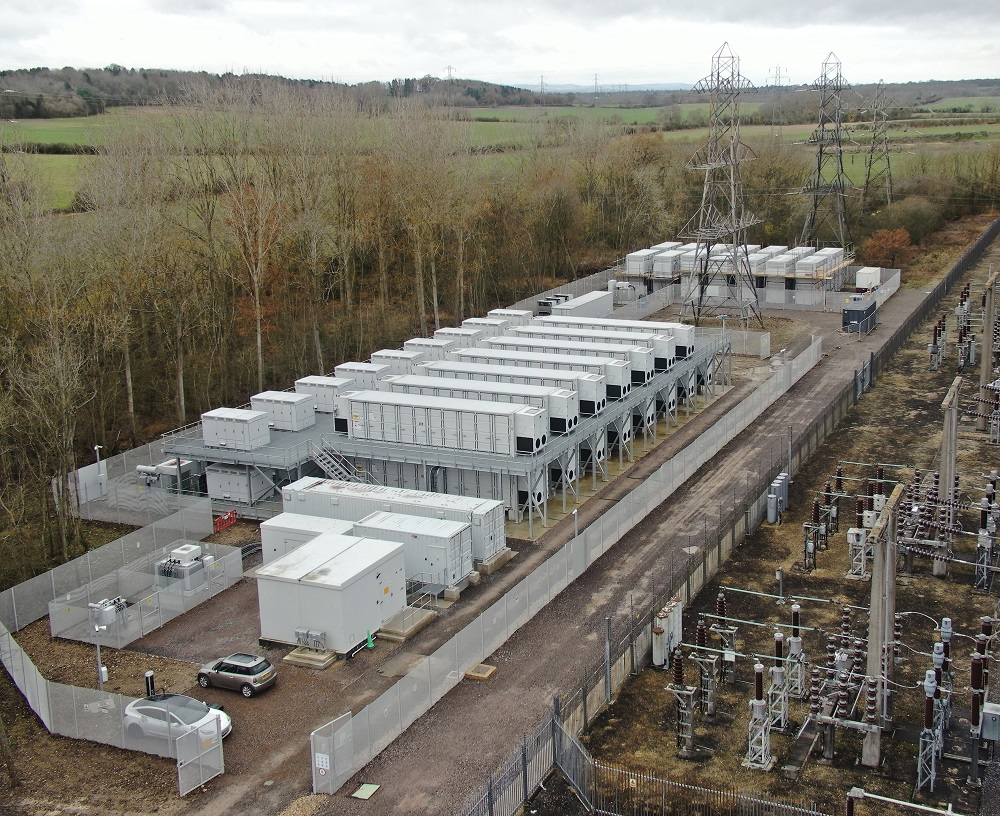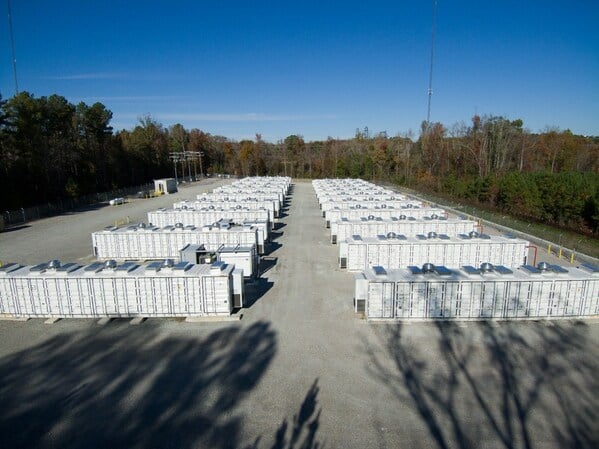


We bring you some predictions of what might be in 2024, in the first-ever edition of the Energy-Storage.news Premium Friday Briefing.
Welcome to a New Year of Energy-Storage.news Premium. We’d like to thank you all wholeheartedly for your subscriptions to the service and the kind words many have shared with us about the site.
Enjoy 12 months of exclusive analysis
- Regular insight and analysis of the industry’s biggest developments
- In-depth interviews with the industry’s leading figures
- Annual digital subscription to the PV Tech Power journal
- Discounts on Solar Media’s portfolio of events, in-person and virtual
Friday Briefing will be a feature in the Editor’s Blogs section of our site only available to you, our Premium subscribers. While upcoming editions will be a sideways look, snap analysis and perhaps even industry gossip focused on chosen topics from recent coverage, for today, we’ve decided to take on the thankless task of sharing some hunches and hot take second-guesses.
Increasingly, the energy storage industry is itself becoming more adept at predicting the future. No, we’re not talking about the brilliant experts and executives whose words many of us take very seriously when it comes to their sometimes eerily accurate field of vision into the industry’s future.
And we’re not talking either about the technology roadmaps that carefully plot pathways forwards. No, it’s the rise of AI-based trading that best exemplifies how energy storage, the most complex and flexible of energy assets, is an industry based on forecasting.
Well, our editorial team doesn’t have an algorithm for predicting the future and we don’t claim to have psychic powers either.
What we do have is years of our daily coverage to look back on. But more importantly, our contacts, sources and friends within the industry are indeed the brilliant ones, who provide the real-world context, knowledge – and indeed sometimes also gossip – that help us all to see what’s possible.
Can Europe catch up?
Well, it’s cowardly of us to start a set of predictions with a question, but it’s a question that will define much of the coming year’s activity in Europe.
From being on a relatively even footing in the energy transition race with the US, the last two to three years have seen Europe first slip behind and then stumble exactly as the US transition became turbocharged by the Inflation Reduction Act, Bipartisan Infrastructure Law, and other policy and economic dynamics.
In fact, prior to the IRA’s passing, Europe’s map of around 30 planned battery gigafactories looked like it would catapult the continent into a lead, at least on manufacturing. As we reported throughout the year, the US is now a much more attractive investment destination than its Transatlantic friends (and rivals) for gigafactories.
So, from a cowardly question to a relatively safe prediction: this year will see the European Union (EU) step up legislative efforts to create its own attractive investment landscape, through the Net Zero Industrial Plan which is the bloc’s reply.
In downstream demand, the other side of the industry coin from upstream manufacturing, it’s also a fairly safe prediction to say Europe’s energy storage industry will this year finally enter a multiple-gigawatt era of annual deployments. We’ll leave it to the analysts and consultants to crunch the numbers on that, but the obvious fact is that as Europe turns more to renewable energy and away from fossil fuels (Russian imported fossil fuels especially), the need for storage grows.
Just before the festive break, the EU approved a €17.7 billion (US$19.5 billion) state aid package for energy storage in Italy, which is the biggest such move so far, but not the only one, with Greece, Spain, Germany, Netherlands and Belgium among the nations set to ensure the UK is not the only European country likely to deploy battery energy storage system (BESS) assets on that sort of scale.
Utility ownership of storage in the US
This prediction is one that has been made a few times in the past, so we’re still in relatively safe territory here: it no longer seems premature to expect that the share of battery storage in utility ownership in the US will increase dramatically.
To date – and to simplify the dynamics somewhat, which vary across the US – electric utilities have tended to prefer to let developers take the risks associated with battery storage projects, with the load-serving entities instead contracting for storage capacity or services through a variety of contracting structures.
Coupled with IRA incentives, the growing business case for batteries in many of the US’ transmission areas and wholesale markets is making them an undeniably attractive investment and it isn’t just the independent power producers (IPPs) that know it.
At the same time, many investor-owned utilities (IOUs) don’t really have a choice but to get their feet wet. A fifth of US states now have energy storage deployment targets in place as part of their clean energy and decarbonisation policy goals. The result of that in the likes of New York, Virginia and most recently Michigan, is that utilities are tasked with delivering significant portions of those multi-gigawatt goals.
While there’s no reason some of that won’t be contracted for with third-party owners and operators, there’s also a lot of reasons why utilities will want to own it themselves.
One other sometimes overlooked dynamic of the US electricity supply map is the role played by other types of load-serving entities, particularly municipal and cooperative electricity suppliers.
Investments in energy storage ownership from these state or member-owned organisations will also comprise a more significant share of the market than industry-watchers, especially those overseas, might expect. This is because the IRA made it possible for these types of entities to monetise investment tax credits (ITC) by being paid directly by the government, rather than by reducing tax liability as an investor-owned utility would need to do.
ESS for EV charging
The role of energy storage system (ESS) technology in buffering the grid from electric vehicle (EV) charging demand spikes and fluctuations has been a quiet revolution in the industry.
It’s already happening: one of the first Tesla non-residential battery pack installs in the UK was at a roadside services centre a few years ago. After similar activity at highways in mature markets like Europe and the US, a few months ago the first installation of that type was opened in Malaysia, showing that this super-useful application of smart battery storage is spanning the globe.
While these installations will likely comprise small to mid-sized BESS units for the most part, we saw with the Energy Superhub Oxford in the UK – featuring the world’s largest lithium-vanadium hybrid BESS – and with New York’s first planned BESS for EV buffering, some will also be in the multiple megawatt range.
And of course, the synergies with the EV industry do not stop there. The shared battery supply chain is an area we’ll leave for another day, and for analysts focused on the upstream to assess, but another exciting area is the vehicle-to-X space, aka bidirectional charging.
This might not be the year vehicle-to-grid (V2G) or vehicle-to-building (V2B) becomes a mainstream option for car buyers, but it will most likely be a year in which industry investments in commercialising the technologies will ramp up.
To my mind, much like other distributed smart technologies like virtual power plants (VPPs), I do think that this will be a year in which those technologies that span the gap between stationary batteries and those in motion enter mainstream consciousness and awareness.
In other words, it doesn’t seem feasible that the barriers to V2G adoption will be broken down overnight, but it does seem very likely that more and more people will become aware of the potential of V2X, leading us closer to an inflection point for adoption.
Fire safety yes, but cyber safety too
Safety is of course a topic that should always be top of mind for the industry. For any industry. When it comes to energy storage, it’s usually fire safety that comes to mind, and again, rightly so.
As Energy-Storage.news Premium subscribers will have read in our recent interview with Pacific Northwest National Laboratory (PNNL) expert Jeremy Twitchell, the industry is coming to terms with the challenges and implementation of best practices is the ideal weapon to counter concerns around fire safety.
That’s not just in terms of putting fire protection, detection and suppression equipment in place, but also in terms of engaging with local authorities having jurisdiction (AHJs) and communities, emergency responders and other stakeholders.
So, it would hardly even be a prediction to say that fire safety will dominate many conversations around energy storage in 2024, it seems obvious enough.
Further to that, you might have already seen that in our series of Year in Review Q&A articles with leading industry figures and thought leaders published over the winter break, respondents were asked for their thoughts on what 2024 will hold for the industry.
Jeff Bishop, CEO at Key Capture Energy said that “continued focus on safety in all aspects” should be a major priority for the industry this year.
“Yes – the day-to-day safety, but also the macro cybersecurity side. We have to get this right,” Bishop said.
One late 2023 news story that speaks to this is the recent switching off of a Chinese-made battery storage system at a US Marine Corps facility by project developer Duke Energy. This came after politicians including Florida Senator Marc Rubio voiced concerns around manufacturer CATL’s links to the ruling Chinese Communist Party. While we may all have our views on that particular incident and its politicised nature, there’s no doubt that with cloud-connection being a huge enabler of the digital, renewable energy transition, it’s also a point of potential vulnerability that needs consideration.
So yes, it’s a pretty safe bet that fire safety issues will again be a preeminent topic of conversation, but this year it will be joined by cybersecurity too.
Tough calls and divided opinions
For this first edition of the ESN Premium Friday Briefing, we’ll leave it there, but perhaps it’s worth just a quick mention of a few other things that might be on collective industry minds in 2024:
- Regulators’ tough calls: California’s NEM 3.0 rules on rooftop solar, state of charge rules in Texas’ ERCOT market and plenty more.
Regulators in maturing solar and storage markets will wrestle with different decisions than those in emerging markets, but in any case, regulators will have a big role to play in storage markets around the world. Two quick ‘maturing market’ examples that spring to mind are California’s net metering succession plans which if played right could see battery storage as a key enabler of rooftop solar and if played wrong could put California’s energy transition at risk, and ERCOT’s consideration of introducing state of charge (SoC) rules for grid-scale storage. Meanwhile in emerging markets such as in various Asian countries, there’s more of a blank slate in terms of storage regulation, meaning there’s plenty of work we’ll see being done in 2024.
- Governments need to be savvy around capturing upstream value chain
The European Union’s attempt to come back at the US for the Inflation Reduction Act is partly about the Net Zero Industry Act – which will focus on supporting clean energy manufacturing – but the act is just part of an overall EU Green Deal package that has been in the works for some time.
Adjacent to the Net Zero Industry Act efforts is the freshly updated EU Battery Directive that will bind makers and importers of storage devices to rules on sustainability, transparency and product quality, from requirements for recycled content to carbon footprint labelling.
While there are various motivations for doing this, including ethical and environmental, there’s also a major element that the EU Battery Directive is aimed at helping Europe capture more of the economic value of the battery supply chain.
What may turn out to be a remarkable example of this, and something I expect many of us will watch closely with interest, is the decision by the government of Chile a few days ago to partly nationalise its country’s major role in global lithium extraction. Plenty of analysis is out there to show that the resource-abundant countries that supply raw materials for battery production aren’t those that benefit most economically from growing demand for the finished products. That’s not a dynamic unique to batteries, by the way, but however we look at it, it seems very likely capturing the value chain for battery production will be an area in which we see plenty of activity at government level in 2024.
- Long-duration lithium
We here at Energy-Storage.news would surely not be alone in predicting that long-duration energy storage (LDES) deployments will continue ramping up, albeit not at the levels needed to effectively enable deep decarbonisation – yet.
Where some of the industry is split however is on which LDES technologies are a) the best fit for each application on a technical basis and b) the most cost-effective to deploy. While there are now literally dozens of newer LDES technologies, many of them proven on a technical basis, it’s been interesting to see that some of the earliest competitive solicitations for long-duration which have emerged over the last year or two have seen a number of wins by the incumbent technology, lithium-ion.
So, while our prediction might reasonably be that the world will be seeing more and more LDES, and 2024 could be a big year for it, the jury is still very much out on whether that will largely comprise lithium batteries, or something else, be that other electrochemical technologies like flow batteries, novel and innovative thermal or mechanical technologies, or even the legacy standout, pumped hydro.
Anyway, thanks for joining us for today’s briefing. There are plenty of other areas we could have attempted some crystal ball-style gazing, and one of the most exciting things about the energy storage industry is its lack of predictability, so whatever happens, we know it’ll be an interesting year.
Energy-Storage.news’ publisher Solar Media will host the 9th annual Energy Storage Summit EU in London, 20-21 February 2024. This year it is moving to a larger venue, bringing together Europe’s leading investors, policymakers, developers, utilities, energy buyers and service providers all in one place. Visit the official site for more info.
Energy-Storage.news’ publisher Solar Media will host the 6th Energy Storage Summit USA, 19-20 March 2024 in Austin, Texas. Featuring a packed programme of panels, presentations and fireside chats from industry leaders focusing on accelerating the market for energy storage across the country. For more information, go to the website.
ESN Premium subscribers can avail of special discounts for Solar Media events – see site for details.

